Is your kitchen legit? Check out these 13 kitchen essentials.
No matter how humble your abode, a strong kitchen game will catapult you into the adulting big leagues and make you the envy of old friends, new friends and complete strangers who just happen to stumble into your place. Kitchens are the center of gravity for any living space, and the last thing you want is your center of gravity to be a gaping black hole. So let’s get started on gathering your kitchen must-haves by dropping a few design-oriented F-bombs:
Form. Function. Fundamentals.
We begin with a rule of thumb: Keep your kitchen lean and mean and your drawers clean. At least to start.
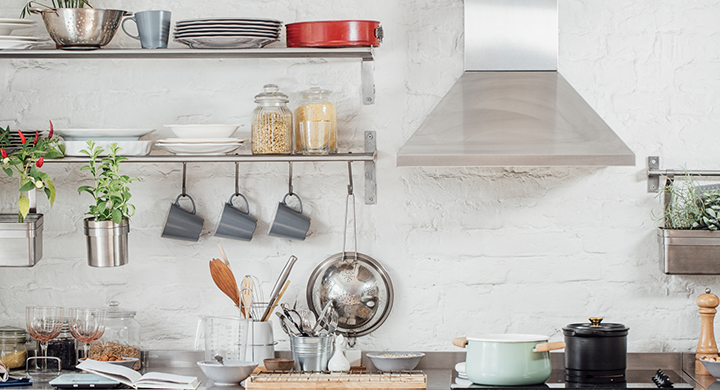
1. Water and kitchen fires do not mix. YOU NEED A FIRE EXTINGUISHER.
We at Toggle® Insurance are “kitchen safety first.” It’s in our blood. So, first up, one of those very important things people too rarely talk about (or even think about).
Kitchens tend to be particularly prone to fire, and in case you forgot this lesson from elementary school, you should NEVER UNDER ANY CIRCUMSTANCES USE WATER TO EXTINGUISH AN OIL OR ELECTRICAL FIRE! Given that extremely life-or-death piece of information, the last thing you want to do when a fire starts in your kitchen is determine what kind of fire it is, right? Yes, that’s right!
Get a “kitchen” fire extinguisher, which extinguishes the kitchen sorts of fires safely. Twenty bucks or so at any hardware store will get you a decent one. Make sure you get the right type of fire extinguisher and learn when and how to use it.
2. A sweet set of knives.
You know on those competitive cooking shows when they send the contestants home? They send them on their walks of culinary shame, carrying their most prized and useful possession — their knives.
Of course, you’re probably not a chef (and you never will be with an attitude like that!), but no matter if you’re a pro or a poseur, knives are the most important kitchen tools in your box. You’ll need three kinds for starters. 1) A chef’s knife for slicing and chopping. 2) A smaller, all-purpose knife for veggies. 3) A paring knife — usually with a blade about 3.5 inches long, used for more delicate slicing and peeling, as well as chopping herbs and stuff like that.
Invest a little extra dough here. Take care of them, and you could have your knives for decades to come.
3. A handheld knife sharpener.
Taking good care of your knives starts with keeping them sharp. A sharp knife, much like the folded steel blade of a Hanzo Katana sword (if you know, you know), is a thing of far-too-rare beauty. It does all the dirty work for you, with practically no effort whatsoever — slicing through everything from steak to warm butter like... well, like warm butter.
A dull knife does a good job cutting only one thing: your hand. Counterintuitive? A little, but trust us on this one. Learn to use a knife sharpener, keep it in your drawer and keep all your digits where they belong. (Okay, we’re letting our insurance-company side show again. Sorry, we can’t help it!)
4. Chopping boards.
Note: Chopping boards with an “S” — plural. You’ll need more than one, and ideally, you’ll want to keep your raw meat chopping board separate from your veggies and cheese. A wooden cutting board is your blade’s best bud. The soft surface keeps your edges sharp and your cuts precise. Wooden boards also pull double-duty in the event of charcuterie.
Hey, if you’re renting, the last thing you want is a battle-scarred countertop slicing into your security deposit.
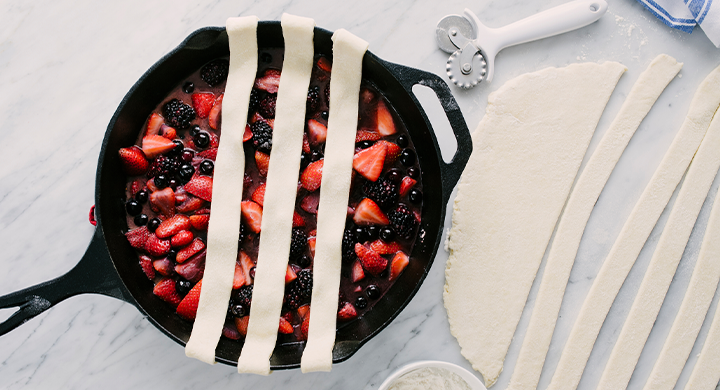
5. A cast-iron skillet.
What do old-west chuck wagons and Michelin-star restaurants have in common? Cast-iron skillets. What’s so great about cast-iron? Pretty much everything.
Even cooking: Iron heats up more slowly than copper or aluminum, but it holds the heat a lot longer and distributes it more evenly. If you’re a cooking n00b, just suffice it to say, it cooks stuff real good. In time, you’ll learn exactly why and then you can tell all your friends how you’ve been cooking on cast-iron since before cast-iron was cool. Except it’s always been cool. But you don’t need to tell your friends that part.
Stove to oven: This might sound like a pro-level use case, but it’s pretty basic and super handy. Example: Toss the skillet on the stove. Heat it up. Drop a hunk of meat in there and sear it real nice. Then pull the skillet off the burner and throw it in the oven to cook the meat through and through — no transferring from frying pan to baking dish. Remember the whole versatility thing we mentioned earlier? This is that.
What else can cast-iron do? What can’t it do? Cornbread. Cheeseburgers. Campfire cooking. Pizza pie. Regular pie. Hammering nails. Waving off poisonous snakes. You name it, cast-iron crushes.
6. Stainless steel nesting bowls.
Generally speaking, metal in the kitchen is smart. It’s light. It doesn’t chip like porcelain. It lasts. And you’re not putting more plastic into the ecosystem. The world of nesting bowl uses can include serving salads, marinating meat and building recipes that require lots of individual parts, later combined.
Beyond that, a set of handsome, oh-so-utilitarian nesting bowls will keep your mise en place looking totes en point (Google Translate FTW).
Real talk: Nesting bowls can be a little annoying, as you need to keep puzzling them together, and they might trigger your OCD if one of them is being used or goes missing. But in the long run, it’s a small price to pay for a small footprint in limited kitchen space.
7. Snappy tongs!
Snappy rhymes with happy, which is how everyone feels about tongs! Almost as good as hands, and in lots of cases better, tongs might be the greatest utensil ever invented! (Sorry, spork lovers.)
Ideal for grilling, stir-frying, serving salad and just plain looking like you know what’s up! Get a few sets in various sizes. The ones with the silicone tips aren’t as much fun in the noise-making department, but they will protect coated cookware.
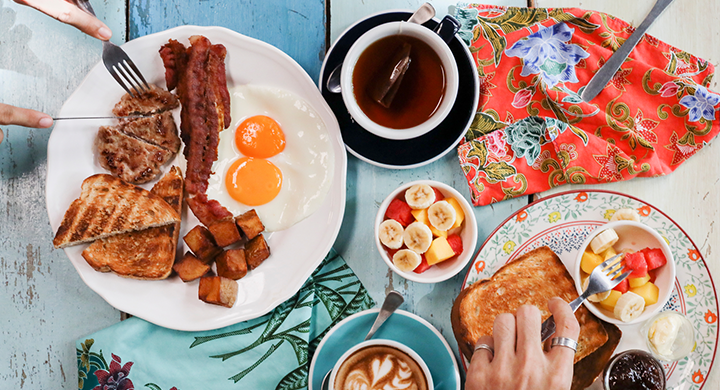
8. Place settings: Let’s set the record straight.
Choosing the right dishes and silverware can be slightly crippling. You’re gonna want something to reflect your exquisite taste, but chances are your exquisite taste will end up in a cage match with your wallet.
Here’s a little secret: Having dishes and silverware is way more important than having the right dishes and silverware. The best chefs will tell you that food looks yummiest on white plates, so start there.
Regarding expense: All plates chip. It’s a sad fact of life for plates. But it’s okay. Plates are inanimate objects and, ultimately, not worthy of your emotional investment. So when you’re just starting out, go simple. Go white. Go inexpensive enough that you won’t shed any tears when something inevitably breaks. In short, go Ikea.
Buy all the stuff you want and a little more just in case (Swedish big-box shopping can be a long trip). You’ll thank us, you’ll thank you and your guests will just be happy they have something to eat on.
Another under appreciated truth about place settings: Mismatched is a shabby-chic design thing these days. So make peace with what’s piecemeal, and use it to your inadvertently stylish advantage.
9. A slow cooker.
Slow is probably the antithesis of how you lead the rest of your life, but in this case, slow can be fast. Or at least slow can give you the illusion of fast, and let’s face it, you can’t live on microwave food alone.
Just throw some ingredients in your slow cooker in the morning before work, and by the time you get home, the place smells like home, and you’ve got a healthy dinner ready to be served. Immediately — not in 30 minutes when the delivery guy shows up. It’s like having your mom cooking for you without the annoying mom-living-with-you part.
10. Measuring cups and spoons.
Unfortunately, not every ingredient can be eyeballed. Sure, it’s fine for mac and cheese, or ramen, but when you work your way up to more sophisticated dishes — like pancakes for that special “friend” who spent the night or a birthday cake for the friend who slept over all year — you’re gonna need some degree of exactitude in both the wet and dry variety.
It’s been a long time since chemistry class, and you’re probably not in the mood for a refresher. Just remember that liquid measures include fluid-ounce conversions, and dry measures don’t.
When it comes to cooking, keep it loose and spontaneous — don’t be slavish to measurements. When it comes to baking, however, stick to the script and use these essential kitchen tools to help.
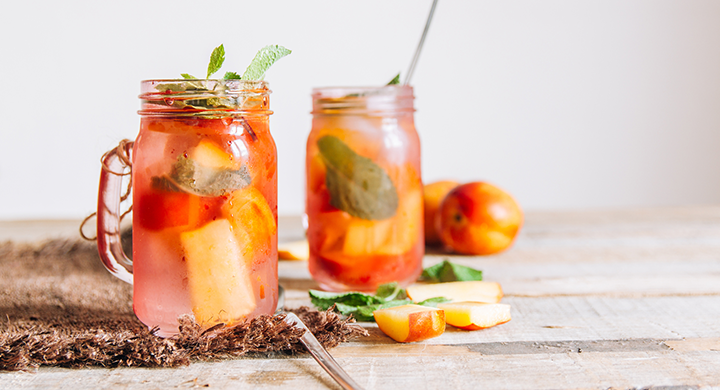
11. Drinking glasses. Mason jars.
You don’t need to take our advice on this, but at least hear us out.
Mason jars. They’ve been around since forever. They’ll probably be around after humanity vanishes from the earth. You can buy them literally almost everywhere — from your local grocery to your ubiquitous big-box retailer to your e-tailer of choice. They usually cost less than a buck apiece. They magically make every beverage more appetizing. But you can also use them as flower vases, to refrigerate leftovers or to make “lunch container” salads that are eco-friendly and look uber cool on your desk at work. The options are endless. Go fancier if you feel like it, but we can’t think of a really good reason to.
12. Pots and pans. It’s a process.
In a perfect world, there would be one peerless package of practical pots and pans a person could purchase for a proper price.
Alas, your collection of favorite pots and pans will most likely be an a la carte endeavor. It will depend on a combination of need, budget and a set of personal preferences you’ll discover the more you cook.
Here are some thoughts for starters:
Pans:
8” non-stick pan: Perfect for a single omelet. Ceramic coating costs a bit more, but it’s chemical-free and can be heated to much higher temps.
11” pan or saucepan: Invest in something with at least an 8mm bottom. It’ll heat more evenly and will withstand warping. Non-stick is easy, but stainless steel can be really rewarding to work with also. Use plenty of butter or oil, and just like that, stainless is not only “non-stick” but delicious. If you go with a deeper saucepan, it will do double duty as a shallow pot — great for when you’re boiling pasta and simmering a sauce simultaneously.
Oven/roasting pan: Round (22–26cm in diameter) is probably the most versatile shape (bake pies or make quiches), but get a rectangular one, too. For things like lasagna, whole chicken or brownies.
Pots:
Maybe consider an enameled dutch oven instead of using pots. They can get pretty expensive if you go big, but there are some great ones on the market for about 50 bucks. Perfect for anything you need to boil or simmer, and they’ll last you a lifetime.
Start with those, and you’ll be good to go for a while. In time, you’ll find you rely on some pots and pans much more than the others, and you’ll find out which ones stand the test of time. As you build your collection, you’ll be so glad you didn’t waste dough on cheap crap or a full set of pieces you never use.
13. Stuff you might forget to get.
Kitchen tools are like any tools in that you often don’t know you need them until you do. Difference is, when you discover you need something like a wood chisel, for example, chances are the project will wait while you run to the hardware store to obtain one. Not so when your eggs are sizzling, and you’re without a spatula.
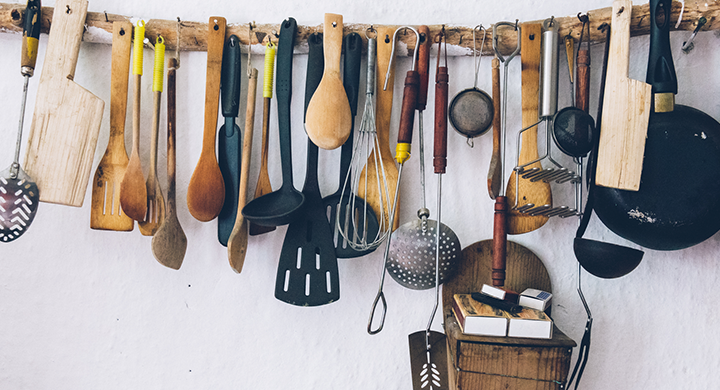
So here’s a list within a list of the miscellaneous yet nonetheless crucial kitchen essentials:
- Spatula (see fried egg example above).
- Whisk. Whhhhisk.
- Ladle. Rhymes with dreidel. Much better for serving soup.
- Veggie peeler.
- Can opener.
- Food processor. Processed foods are bad. Food processors are awesome.
- Colander. Unless you’re allergic to pasta.
- Strainer. For cleaning your filthy fruits.
- Oven mitts. No, your bath towel won’t cut it. And ew, that’s gross.
Bonus points for:
- A salad spinner. Not a strict necessity. Extremely fun to use.
- A grater. Can you conceivably live without one? Sure. But why?
- A pizza stone. Great for frozen pizza. Even better for when you start making your own. Oh, and they work on the grill super well.
- French Press. It’s not a workout move, it’s a coffee maker. And it will definitely get your heart beating.
- Salt and pepper mills. Put a little wrist into it.
- Cocktail shaker and strainer set. Nothing says “amateur hour” like an un-frothy margarita.
Okay then! Now that you’ve kitted-out your dream kitchen, you’ll want to get cooking. Not sure where to start? We’ve prepared a housewarming gift for ya: the recipe for Kevin’s Famous Chili for your first dinner party. It’s on us. Good luck and enjoy!





